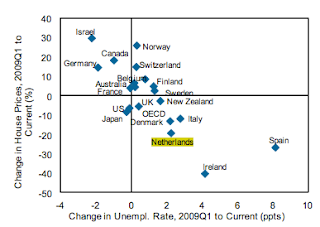The recurrent theme in forward thinking nowdays is the decline of technological 'revolutions' cycle. I wrote about this on foot of earlier research (here) and in recent weeks there has been another - most excellent - article on the same topic from Garry Kasparov and Peter Thiel (link here).
Two quotes:
"During the past 40 years the world has willingly retreated from a culture of risk and exploration towards one of safety and regulation. We have discarded a century of can-do ambition built on rapid advances in technology and replaced it with a cautiousness far too satisfied with incremental improvements."
The irony has it that in our collective / social pursuit of certainty, we have surrendered risk pricing and risk taking to the professional class of the 'bankers' who proceeded to show us all that they are simply incapable of actual investing. The delegation of risk authority to them, compounded with over-taxing risk taking via tax systems and strict bankruptcy regimes, has meant that real equity and real investment have been replaced with financial instrumentation of debt and financial instrumentation of creativity.
"Many investors practise a fake form of long-term thinking. Portfolio managers see the returns of the 20th century and project those far into the future. Tomorrow’s retirees are betting their fortunes on the success rates of yesterday’s companies. But the vast wealth registered by modern capital markets came from technological feats that cannot be repeated. If nobody takes the risk to invent products that produce new industries and new profits, then analysing historical returns from the 20th century will be no better guide to our future than researching crop yields from the 10th century. Without innovation, faith in the stock market is a kind of cargo cult."
We are no longer thinking - as a society - in terms of risk as an input into production of new goods, services, value-added in the economy, but see it as both as a negative utility good (something to avoid and reduce) and as a fertile ground for taxation (a logical corollary in the world where risk is a matter of 'professional' fees collection, and not an input into innovation). The social structures of modern democracies in the West are now wholly committed to reducing risk impact on households - the Nanny State - and thus taxing risk returns.
"Above all the future will be created by individuals. Those with the most liberty to take on risk and make long-term plans, young people, should consider their options carefully. ...The coming generation of leaders and creators will have to rekindle the spirit of risk. Real innovation is difficult and dangerous but living without it is impossible."
Note: beyond 'professionalization' of risk, there also remains the issue of 'financialization' of risk. While Kasparov and Thiel clearly focus on the latter aspect, my comments focus on the former. But the two are not, in fact, separate - the financialization is impossible without professionalization, and vice versa.






















